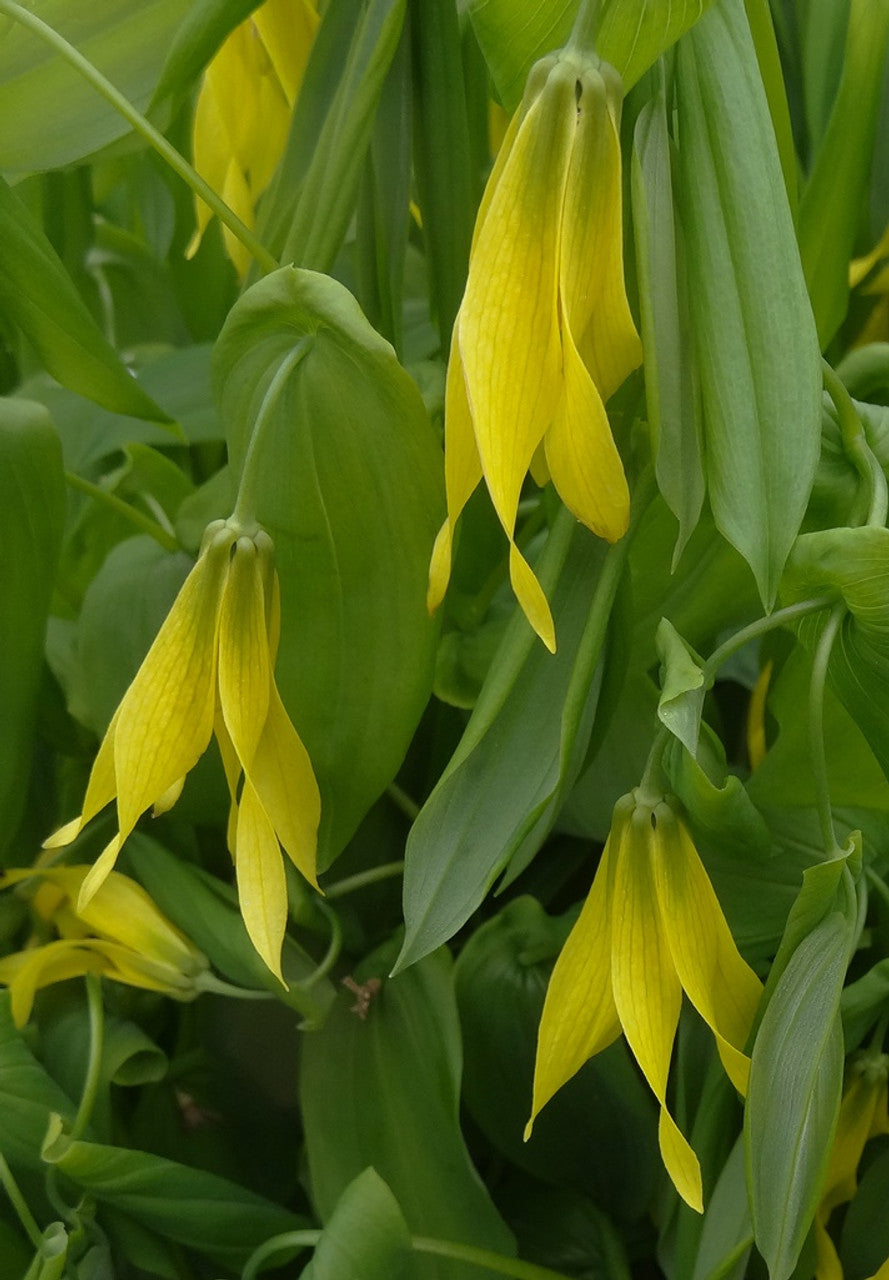
Great Merry Bells
Showy and graceful, Great Merry Bells (Uvularia grandiflora) is one of the most attractive and elegant of eastern North America’s spring wildflowers. Native to rich, moist woods and shaded slopes from Canada south to Georgia and west to Missouri, it’s a good choice for shady gardens where its pretty, drooping, bright yellow blooms enliven the landscape in mid to late spring.
What does the Great Merry Bells plants look like?
Slender, arching stems rise one to two feet tall, adorned with several pairs of glossy green, perfoliate leaves (the leaves look as if the stem has been pushed through them). The leaves have parallel veins, are borne on circular stems that look flattened from above, and are glossy bright green. In spring, each stem ends in a single flower, or sometimes two to three in a cluster, that hangs down and nods in the breeze like a dangling bell. The golden-yellow blooms are two inches long (sometimes more) and irregularly ruffled, with slightly-twisted petals that lend a delicate, romantic air to this small woodland flower.
Great Merry Bells is a popular plant for shaded or woodland gardens.
It provides color early in the season, when the shade garden is often still quiet and drab, and it blends well with many other spring wildflowers, including native trilliums, bloodroot, Virginia bluebells, and wild geraniums. It’s an important nectar and pollen source for native pollinators like early-emerging native bees, and attracts a host of beneficial insects and pollinators as well.
As a native perennial, Great Merry Bells is both hardy and reliable, and easy to grow once it’s established. It prefers some shade to full shade and humusy, moist but well-drained soil. Great Merry Bells likes regular moisture, but will adapt to average garden conditions if it has some shade from the heat of summer. It will form small clumps over time, which can be divided every few years if you wish, but it can also naturalize into airy drifts that look especially lovely.
It’s also resistant to deer and rabbits, which is always a big plus when you’re trying to choose plants that will make it in your garden. After the flowers fade in midsummer, the foliage remains attractive through much of the summer, slowly fading into the background as plants that bloom later in the season come into their own.
Great Merry Bells is a plant that’s not purchased for screaming great color or big, brash display, but for its gentle, understated elegance and the way it goes with almost anything in the shade garden. Great Merry Bells is wonderful on shady paths and woodland edges, naturalized in borders and meadow gardens, and paired with other spring ephemerals for a softly romantic combination of textures and spring colors.




